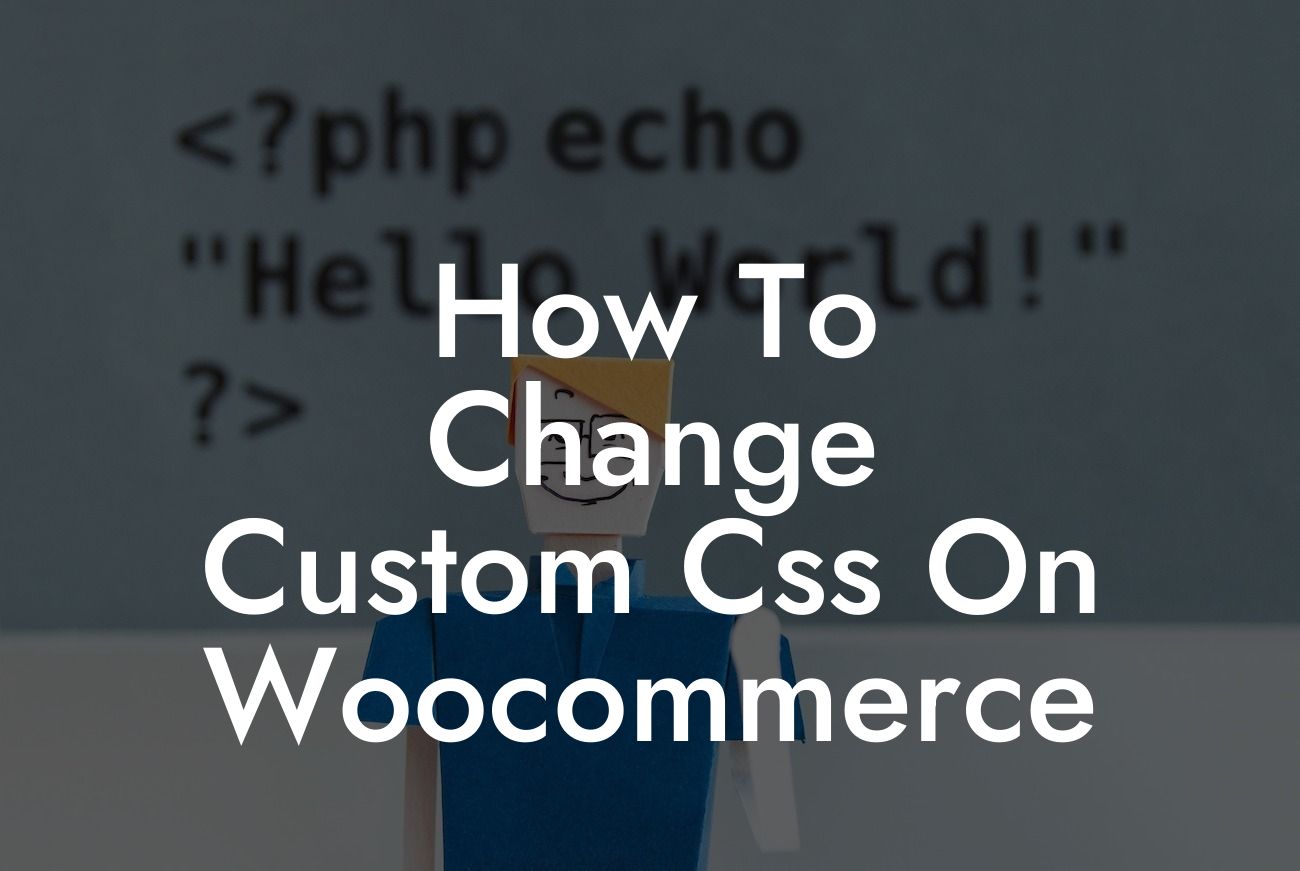Are you tired of your WooCommerce website looking like just another online store? Do you want to personalize its appearance and make it truly stand out? Customizing the CSS (Cascading Style Sheets) on your WooCommerce site is the key. With a few simple steps, you can transform the visual appeal of your online store to match your brand identity. In this guide, we will take you through the process of changing the custom CSS on your WooCommerce website.
Changing the custom CSS on your WooCommerce website is easier than you might think. Follow these steps to get started:
1. Identify the CSS file: The first step is to locate the CSS file that needs to be modified. Navigate to your WordPress dashboard and go to Appearance > Customize. From there, select Additional CSS or any CSS-related options.
2. Learn CSS basics: Before diving into the customization process, it's crucial to have a basic understanding of CSS. Familiarize yourself with selectors, properties, and values. This knowledge will empower you to make the necessary changes to your website's appearance.
3. Make targeted modifications: Once you've grasped the basics, start small by making targeted modifications. For example, you can change the font style, colors, or layout of specific elements on your site. Use suitable H2 and H3 heading tags to identify different sections and organize your code.
Looking For a Custom QuickBook Integration?
4. Leverage CSS frameworks and libraries: To streamline the customization process, consider utilizing CSS frameworks and libraries. These pre-written CSS code snippets allow you to quickly implement changes without starting from scratch. Make use of bullet point and ordered lists to break down complex concepts.
5. Test and iterate: After making modifications, it's important to test your changes on various devices and browsers. This step ensures that your custom CSS displays correctly across different platforms. Keep refining your code and testing until you achieve the desired results.
How To Change Custom Css On Woocommerce Example:
Let's say you want to change the font style and color of your product titles in WooCommerce. Here's how you can do it:
```html
h2.product_title {
font-family: "Arial", sans-serif;
color: #ff0000;
}
```
In this example, we are using CSS selectors to target the h2 elements with the class of "product_title". We set the font family to Arial and the color to red (#ff0000). Feel free to experiment with different properties and values to suit your brand's needs.
Congratulations! You have successfully learned how to change the custom CSS on your WooCommerce website. By customizing the appearance of your online store, you can create a unique and compelling brand experience for your customers. Don't forget to explore other helpful guides on DamnWoo to unleash the full potential of your website. And, for a truly extraordinary online presence, try out DamnWoo's awesome WordPress plugins specifically designed for small businesses and entrepreneurs. Share this article with others who can benefit from it and start elevating your success today.












